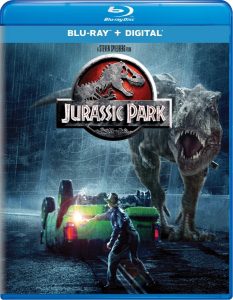Later this year, the TV series “Rebels” will explore the Rebel Alliance – and quite possibly a Force user – in the time just before “A New Hope.” But as longtime “Star Wars” fans know, this territory has already been well-trod in other media. A prime example is the “Dark Forces” graphic novella trilogy from Dark Horse Comics, which started with “Soldier for the Empire” (1997).
With Dean Williams providing a full-page painting every five pages or so, William C. Dietz pens a 126-page origin story for Kyle Katarn that bears some similarities to Corran Horn of Michael Stackpole’s “X-Wing” novels, which were written around the same time. Written in a third-person omniscient style, “Soldier for the Empire” is quite readable, as it shows Katarn switching from the Empire to the Rebellion after he learns that the Empire murdered his father.
As far as novels based on videogames go, it seems “Dark Forces” ranks somewhere in the middle. It’s not at the same level as “X-Wing” or Karen Traviss’ “Republic Commando”; in both of those cases, the authors shared the title with the game but were free to write their own story. Dietz is a bit more handcuffed, and this is especially evident in the closing pages that chronicle Katarn proceeding through an Imperial base blowing away absurd numbers of stormtroopers. But there’s less of this than in the “Force Unleashed” novels, at least.
Dietz’s prose moves forward briskly, but it’s rather blunt and the plot isn’t layered. Whereas Stackpole peppered some clues about Corran’s Force ability throughout his novels, Katarn’s Force ability suddenly kicks in in the final chapters. However, that doesn’t mean Dietz won’t deliver some good reflective passages in the sequels, “Rebel Agent” and “Jedi Knight.” This book ends precisely when the mission ends, with no reflection from Katarn or his Rebel colleague (and possible love interest) Jan Ors.
Also keeping me intrigued were fun cameos from Captain Thrawn (one of the few times he’s written by someone other than Timothy Zahn) and Lando Calrissian. And I appreciated that Dietz (or his editors) went to the trouble to explain the logic of Katarn going after Death Star plans on Danuta when around this same time A.C. Crispin’s “Rebel Dawn” was chronicling a plot involving Death Star plans on Toprawa. “We need both sets to ensure success,” Mon Mothma tells Katarn.
Dietz (with no help from his editors) let me down a few times with language that felt out of place in a “Star Wars” tale. Many of the character names are too Earth-like, including Nathan, Don, Morgan and Jessica. While I can deal with an author using “paper” instead of the preferred “flimsiplast,” it really gives me pause when he uses “E-mail” and “baseball.” The editors should have caught these and changed them to something with a “Star Wars” flavor.
Overall, though, this is a fun novella, and an interesting start to a unique trilogy. Not only does it have art with it, but it also does a significant time-jump ahead for the next chapters in Katarn’s life. I’ll be interested to see who pops up and what other events are referenced, and to learn more about Katarn, who – perhaps unfortunately — will go on to become little more than a background character in Luke’s new Jedi Order.


